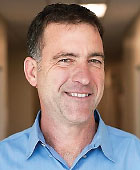The Orchid Story
Abstract
Although the challenges of implementing and sustaining integrated care are formidable, William French, M.D., reminds us in his beautiful and hopeful article that supporting each other in this work can help overcome the barriers and allow integrated care to grow.
—Jürgen Unützer, M.D., M.P.H., M.A.

Several years ago, my wife and I were given an orchid in full bloom. Knowing almost next to nothing about caring for this type of plant, I just did my best to keep it alive through its bloom cycle while wondering what would happen after the last petal fell. Over the next several years, I continued to keep it going and was happy each year to see what looked like new stems coming out—except over time, I became resigned to the fact that these stems—which strangely grew sideways—never bloomed. Finally, around the time I was getting ready to write this article, I noticed a stem like no other growing straight up from my orchid. For the first time, I really became curious about these other stems. And that’s when I first learned about air roots! My crazy bloomless stems aren’t stems at all; they’re these crazy things called air roots.
Now, I know that orchids are epiphytes, meaning that in their natural habitat (that is, tropical rainforests), they use their sideways air roots to attach to other plants and trees above the ground. These above-ground roots allow orchids to firmly attach to neighboring plants and trees so they can more easily find sunlight, while also serving to absorb nutrients, carbon dioxide, and moisture through the air. I also know that just because I don’t actually have a giant rainforest tree growing in my house, I shouldn’t just cut these sideways critters off, and as long as they are reasonably healthy, cutting them could lead to infection and disease.
Like with my orchid and its sideways air roots, I have come to appreciate that integrated care (IC) is something special and potentially beautiful, if it can be brought to full bloom. But also, like my orchid, IC requires a lot of effort just to keep it alive, can be ungainly (those meandering air roots trying to find solid footing), and requires a lot of patience and coaxing along the way just to sustain the hope, but not the guarantee, of eventual fruition.
What can wandering air roots teach us about integrated care? At times, I see my own involvement in pediatric IC over the last 10 years or so as a series of different iterations of my orchid’s air roots, each year convincing myself that one of them is actually becoming “The Stem.” At the same time, I have come to appreciate that perhaps one of the greatest limiting factors for our IC endeavors is that, in many cases, there is no materialized ecosystem of integrated health care systems and supports (that is, an interconnected rainforest) consistently available for IC to latch on to, which could enable it to maintain a sustainable niche in the broader health care system.
By acknowledging the fact that many IC efforts look more like wandering air roots instead of fully realized stems, perhaps we can better understand our own experiences in IC and, as a result, be able to make stronger arguments for what is missing: a more supportive, nourishing (that is, funded, staffed, and valued), less disconnected, and organized health care system.
At the same time, I am learning that just as ecosystems face evolutionary pressures to evolve when their environmental resources are scarce, so too may be the case for integrated care. Recently I have been participating in the Seattle Children’s Community Network Integrated Behavioral Health Learning Collaborative, which is bringing together a number of pediatric primary care clinics in the western Washington region to learn together and support one another in each individual clinic’s efforts to launch its own pediatric IC programs.
Rather than seeking to attach to any one source of support, we are more like, as my colleague Larry Wissow suggested to me, a network of air roots tangling ourselves together to create the mutual support we need to support each other’s nascent stems. Time will tell, but I am hopeful that in another 10 years a blanket of blooming and thriving pediatric integrated care orchids, along with their eager wandering air roots, will cover our pediatric health care landscape throughout Washington. ■



